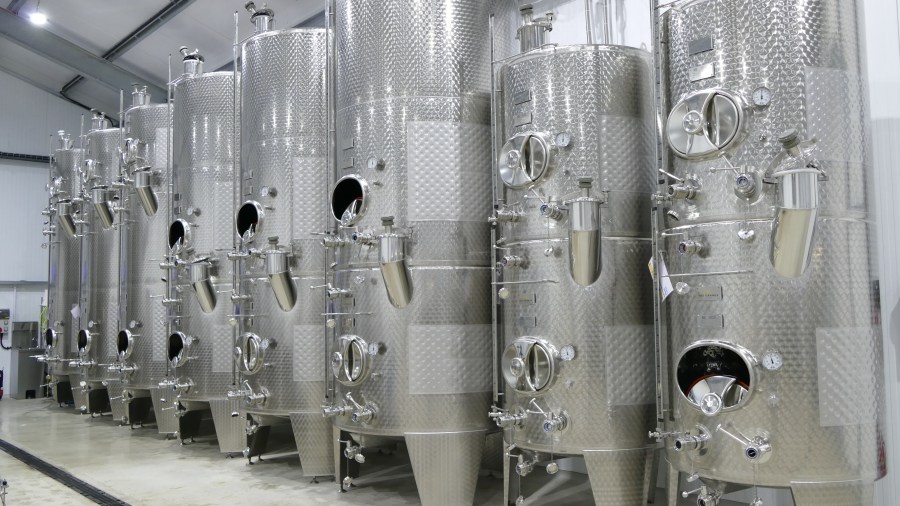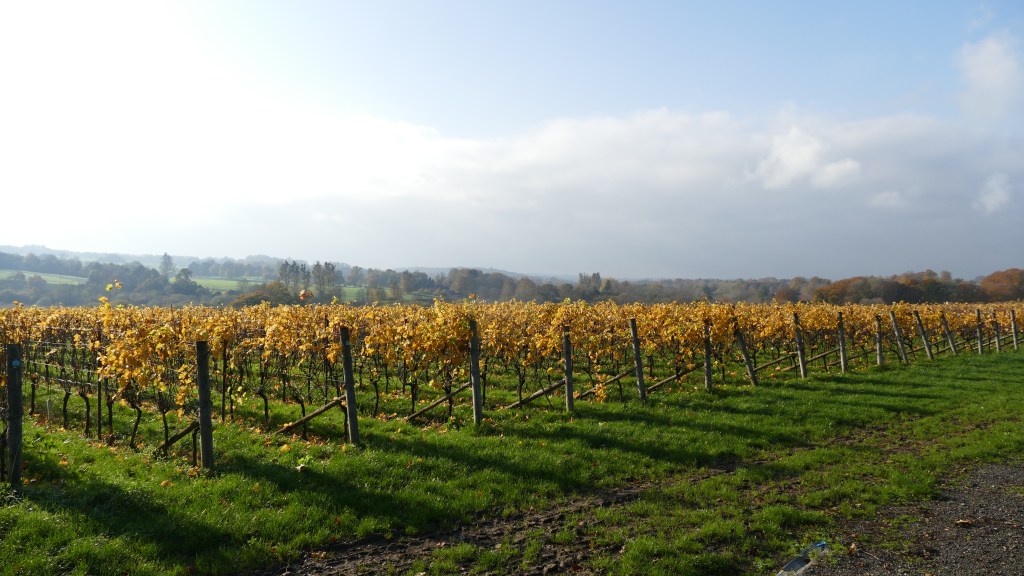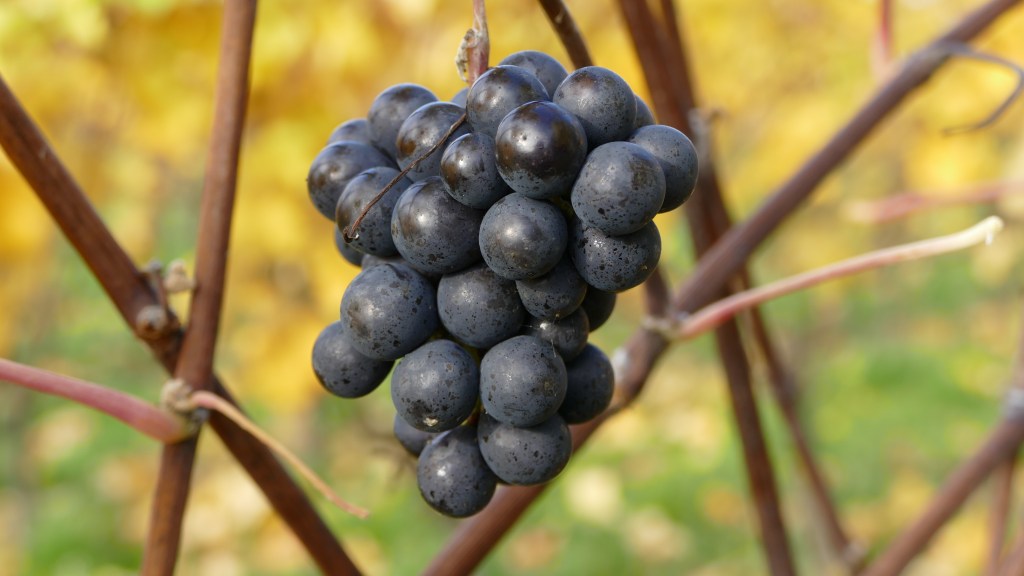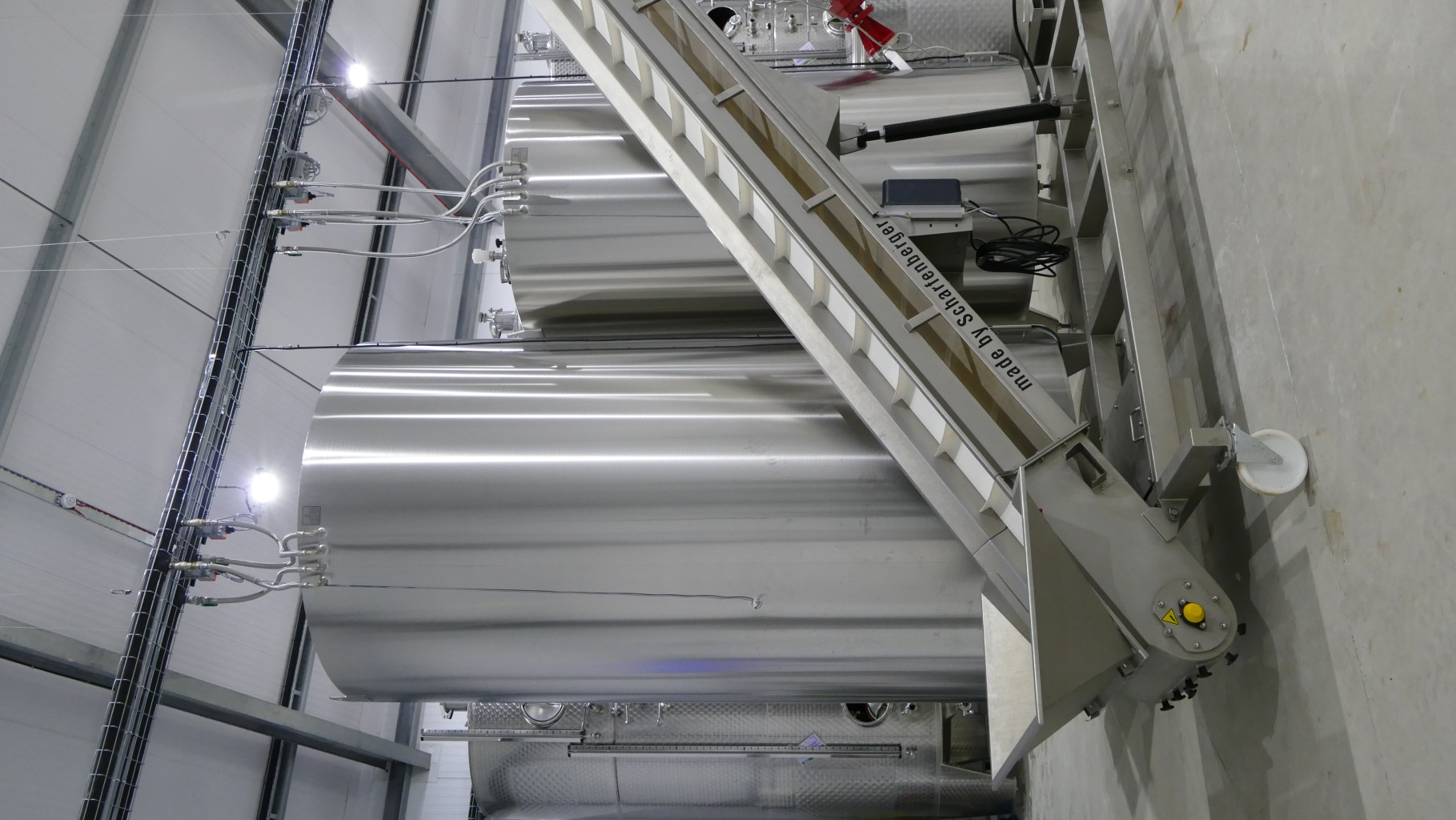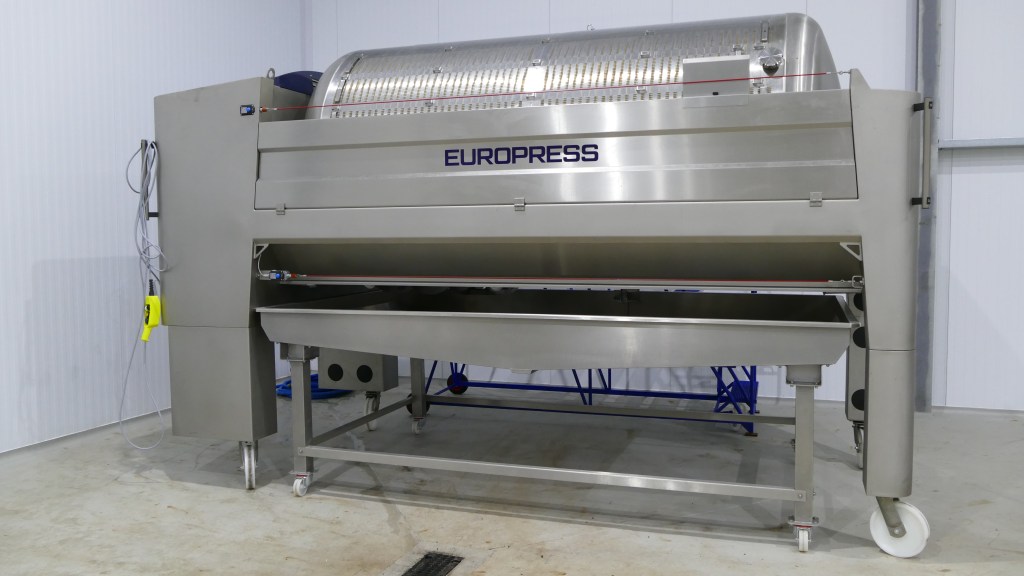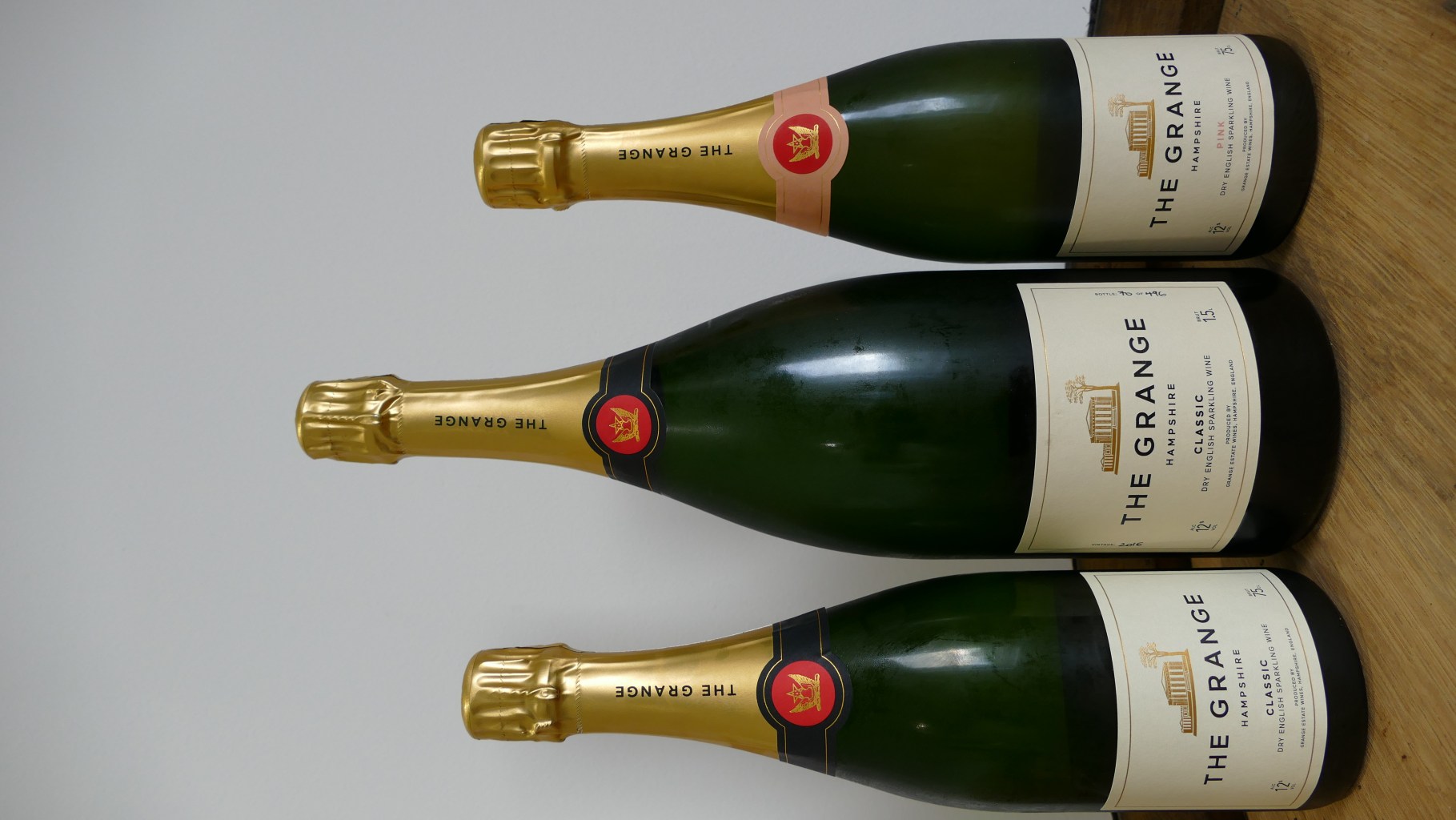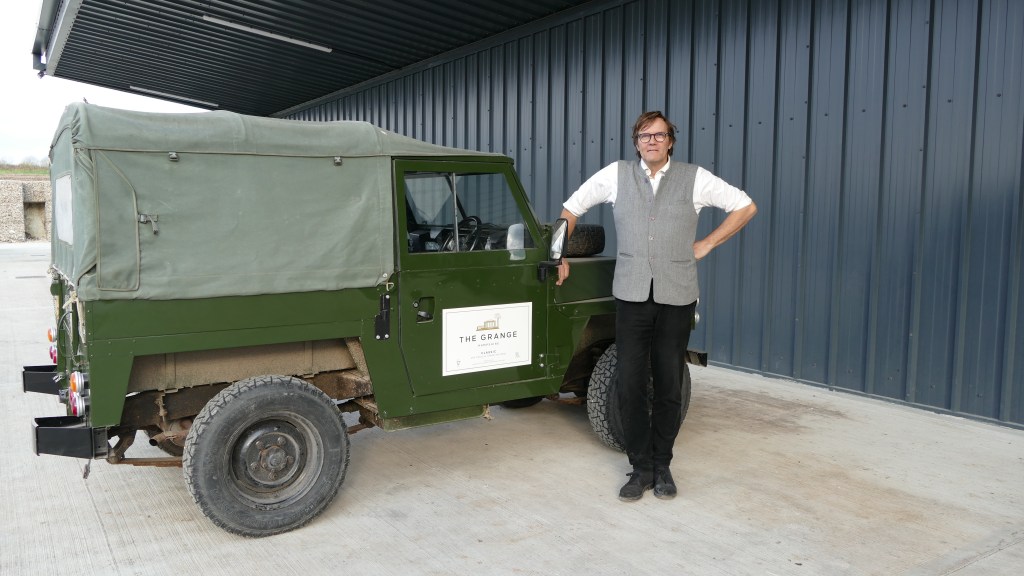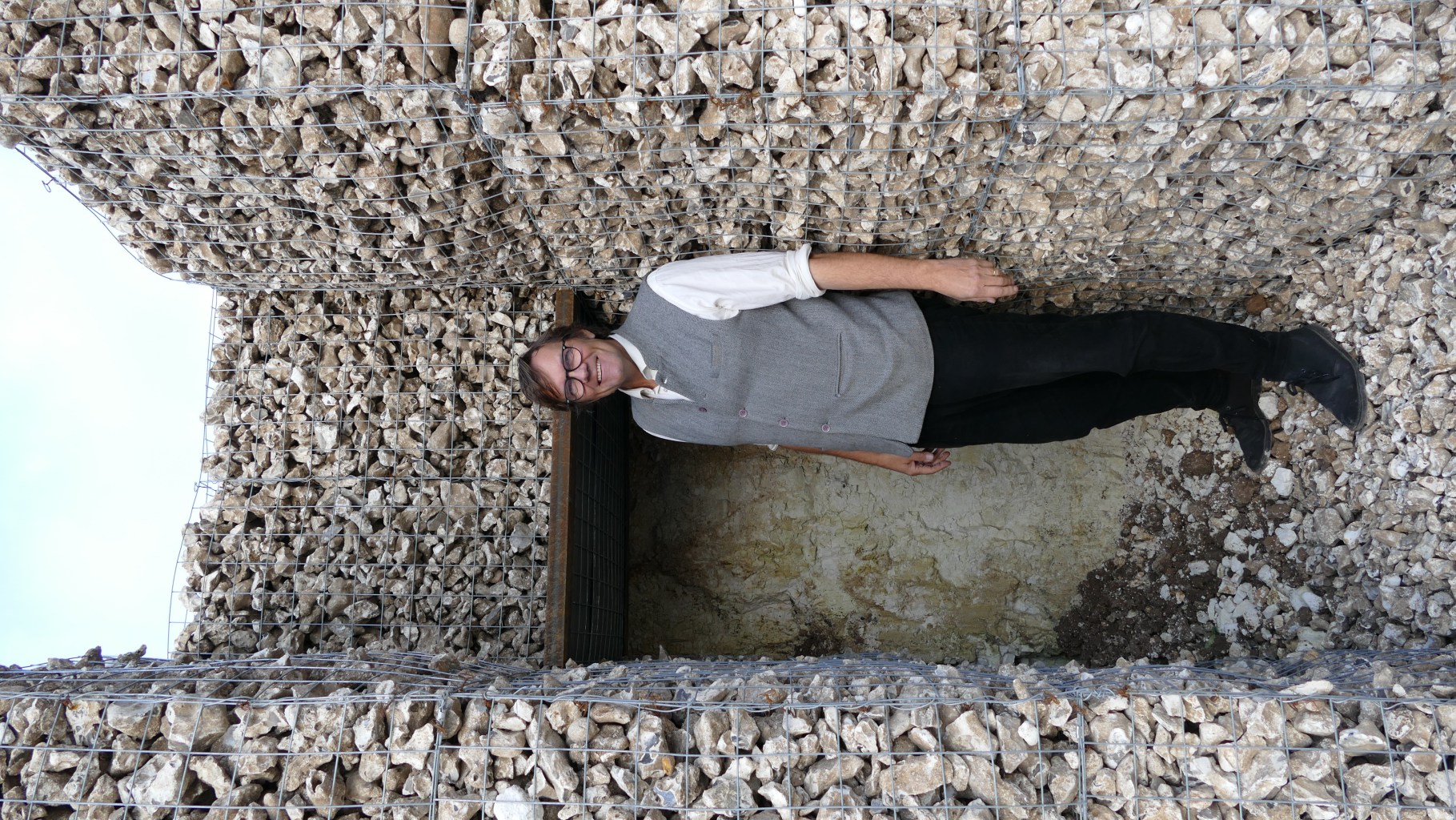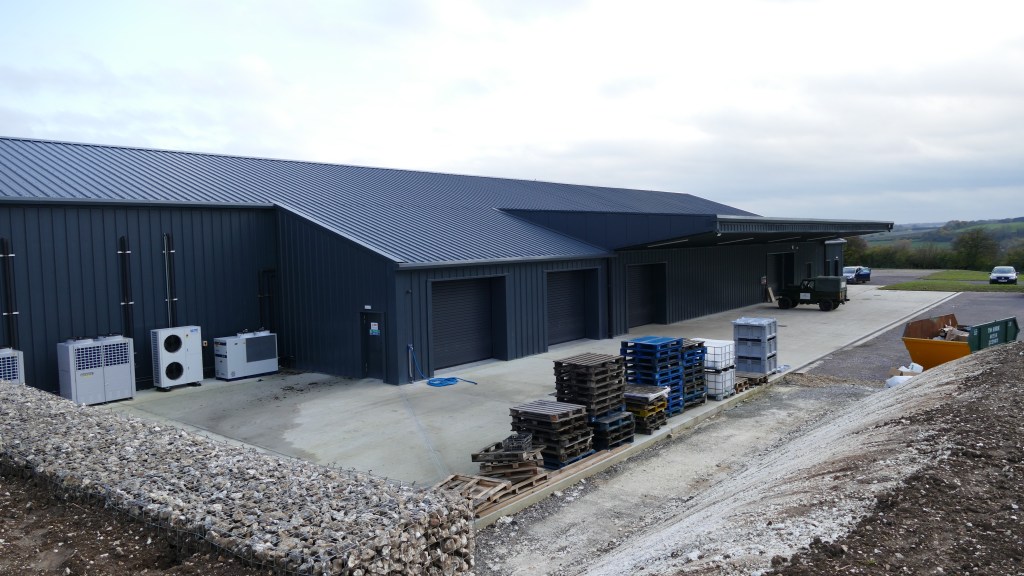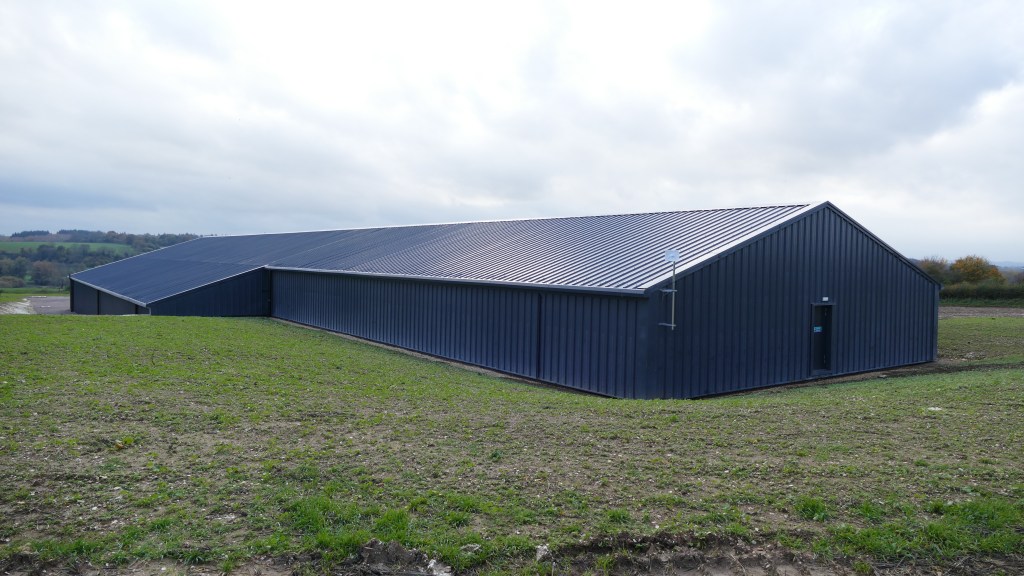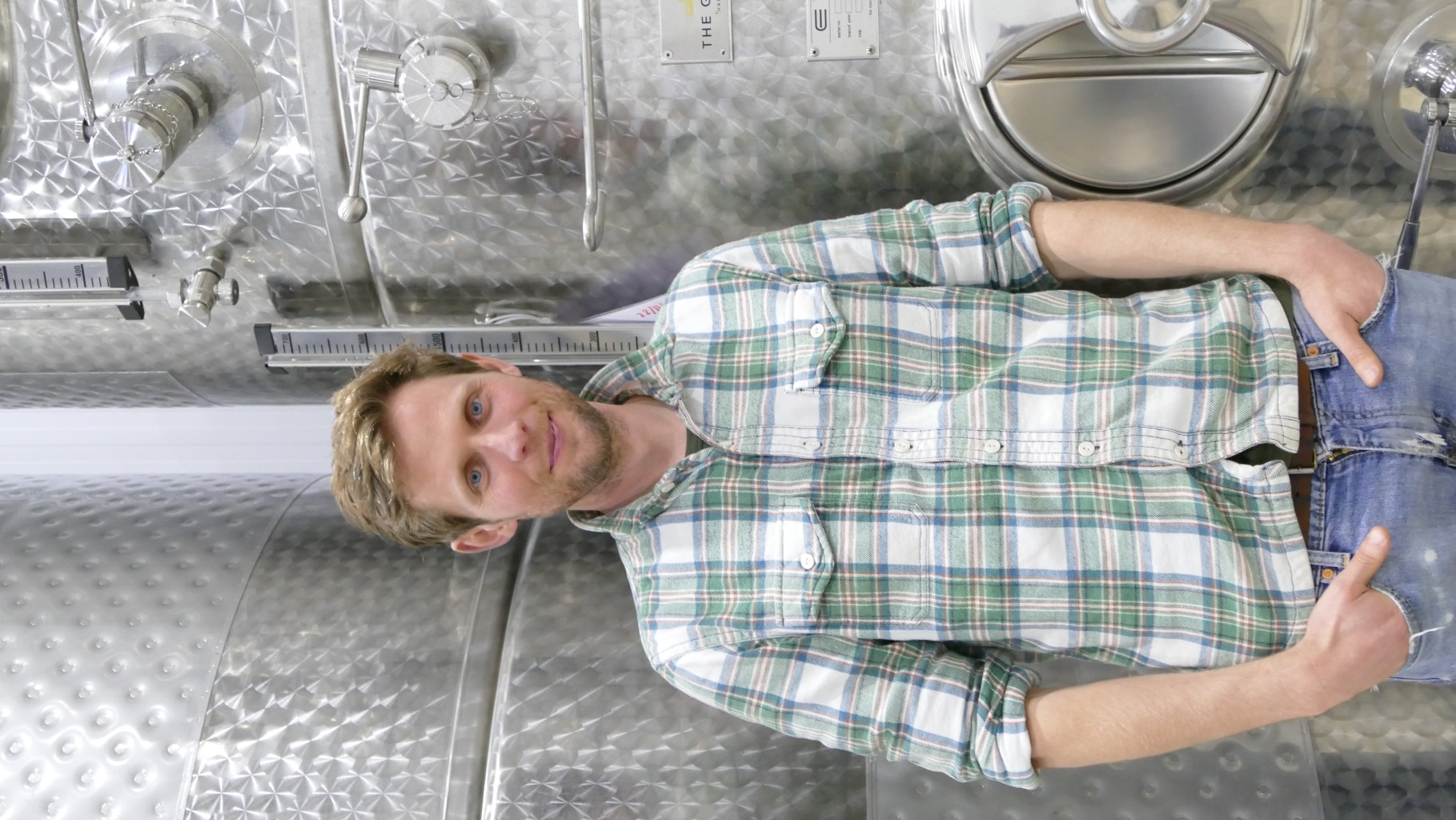The Grange Winery in Hampshire is a place where past, present and future are inextricably linked.
Family connections were the motivation behind the establishment of the winery. Zam Baring explained that he and his siblings Mark, Lucy and Rose all had families that had loved and enjoyed spending time on the land that had been in the family for generations. This was the basis for a project that would connect the extended family to each other and the land for both present family members and for generations to come.
Zam manages the vineyard and winery day to day but all the siblings get together to discuss the big decisions. No matter how far the family may travel from their roots or each other there is always something tangible they can hold onto. The Grange wines and the new winery are something that will connect them back to each other and their family history. The award winning wines from Burges field are something to be celebrated and something to celebrate with together. Wine from the ground to the glass will lead the family into the future.
Family connections may be very useful when it comes to exporting The Grange wines. Zam explained that one of his sisters has a business that already has an international presence including the USA which is a potential export market for the brand. “Every year we have sold out,” said Zam. So for The Grange to be looking at stockists and new markets for the wines is an exciting glimpse into what the future may hold as production scales up.
The Grange currently have two wines. The Grange Classic contains 46% Chardonnay, 23% Pinot Meunier, 26% Pinot Noir and 5% reserve wine. The blend also has a portion of malolactic conversion and utilises a small amount of neutral oak. The other wine currently available is the Grange Pink containing 60% Pinot Meunier and 40% Pinot Noir. Both wines spend 33 months on lees and have won a plethora of awards in 2022 including Gold at WineGB Awards 2022, Silver at the 2022 Decanter World Wine Awards. The 2016 Classic Magnum also won Gold at The 2022 Champagne and Sparkling Wine World Championships. “The wines are typically non vintage partly because over time I want to build up enough reserve wines so that we are not producing vintages,” said Zam, but it was exciting to learn that The Grange will soon release a 100% Pinot Meunier which is based on the 2018 Vintage and has spent 36 months on lees.
The magnificent new winery building is just the beginning of the future vision for The Grange. Zam explained that there will be a laboratory and tasting room with a courtyard making the most of the fantastic view. This whole visit has made me want a time machine. Whilst the present for this vineyard is very exciting it is only a part of a long and detailed journey. With a little imagination it is possible to picture some of what will be achievable at this vineyard in the future and imagine what may have been done in the past. I would love to be able to actually go back two centuries and fast forward several years to see what it becomes.
Zam talks about the idea of regenerative agriculture stating that “it is a complicated process as the whole idea is to restore the soil to health.” Talking about Burges Field before the vines were planted he stated: “The first time it was ploughed was probably in the 18th Century.” It would have benefitted from the water meadows below. “The sheep were out on the water meadows during the day and moved to the lower side of the valley at night. They provided natural fertiliser for the fields, bringing the lushness of the meadow grass to the drier chalky slopes,” Zam added.
In the vineyard Samuel Phillpott the vineyard manager showed us the amazing vines that produce these award winning wines; a mixture of Pinot Noir, Pinot Meunier and Chardonnay. Having come from Bordeaux Samuel describes the differences he has experienced since arriving at The Grange in 2018. “In Bordeaux we used machine harvesters and also harvested noble rot that makes it quite a different experience,” said Samuel. “I think full bunches picked by hand make a difference even if the machines are very precise, because as soon as you take the berry off the stalk there is oxidisation,” he explained. As testament to the care and precision that Samuel shows in the vineyard are the many grapes left behind that were simply not good enough at harvest, highlighting how only the very best grapes make it into the award winning wines produced at The Grange.
“This year the harvest has been good,” he exclaimed before going on to explain that the vines suffered from frost early in the season and some buds were lost. There was also an impact on inflorescence from the weather the previous year “even if we had buds some had no flowers or only one flower but even so we have achieved a good average,” said Samuel. “On ten hectares the harvest has been 85 tonnes. If there had been more than that it would have been too much stress for the vines and we would probably have had to have undertaken a green harvest which is an additional cost,” he added. “We have performed a green harvest in the past; the last time was in 2019 when the grapes were struggling to ripen due to the poor weather.” To ensure the winery team are provided with accurate details of what to expect “there is a plan for the entire harvest and we try to stick to it, so we are in contact with the winery everyday,” said Samuel. Estimates are provided by counting bunches per clone so that it becomes quite precise “the tricky bit is the bunch weight, knowing what that will be, because every year is different. Bunches are weighed at veraison and this has proved very consistent,” concluded Samuel.
On the subject of frost, Samuel said there is a 4-6 degree difference between the top and bottom of the vineyard, so this poses a significant risk when temperatures drop. “In early April this year it dropped to -7 degrees and even if the buds had not burst they did burn.” To mitigate frost, the vineyard currently uses 250 candles per hectare (which is a lot of candles to light) although alternative remedies are being thought about for the future. “We have a team of locals that are on frost watch,” said Claire Hunt who works in sales and marketing for The Grange winery but also takes her share of frost watch. “Sometimes at two in the morning you will get the call,” she added. “Often it is two in the morning,” said Samuel with a smile. They agree that: “When you are on duty even if you are not called you are always slightly alert.” Samuel explained that he has been in trouble with his team for not telling them they can stand down and they are not needed. In the morning after the candles have been lit another team called the “snuffers” are called on to extinguish the candles, preventing waste. Reviewing future methods of frost protection, Samuel explains that whilst there are many options out there not all are suitable for every site. “As The Grange is in a valley this brings unique challenges,” explained Samuel. “The problem with the candles is that the wax comes from palm oil.” They had thought of heated wires but Samuel explained this does not suit the system of pruning because the bud is too far from the wire to make the option viable. Instead they are looking at a system using sprinklers.
The canopy management was all done by hand but there is now a leaf stripping machine. After the mechanical process the team still go through the vineyard to “check on the quality of work,” he said. “This year we had an issue with the berries drying out and I think the reason was that it has been very dry and the stems were not tough enough and may have been dried out by the machine. It was not a problem in the Pinots which were fine but it was definitely a problem in the Chardonnay,” concluded Samuel.
The vineyard does not really struggle to keep the bird population under control although a small section was netted this year as an experiment to look at the effects of extending the length of time the grapes can remain on the vine. This is one of many experiments that take place at The Grange as they work hard to fine tune every aspect of their production.
The main problem they face is a physical one; holes created by ground animals such as badgers. Not only does this impede the progress of tractors and other machinery but it also poses a risk to the vineyard workers.
Like most of agriculture in the UK it can be a struggle to get enough workers to cover all the work that needs to be done in the vineyard and so Samuel explained that they have local volunteers. “For example, at pruning a team of about 10-15 local people are trained. They may not always be as quick as agency staff but that makes it easier for us to control the quality of their work,” he explained. It is true that speed is definitely not the only thing that is important in vineyard work otherwise the team would not go through the vineyard after the mechanical leaf strippers have been through. It is clear from our conversation that Samuel values the local volunteers who take part in frost watch and who work with him at pruning. Pruning is a job that begins at the end of November. The prunings are weighed because “this is a very good indicator of which way the vines are going, details are recorded using Sectormentor to give historic data,” added Samuel. Recording and historic data are things that Samuel wants to implement further in the future. In a familiar theme of looking to the future, Samuel points to implementing worm counts as a target for the vineyard.
The growth between the vines is no longer sprayed, as regenerative agriculture methods are being adopted, so a Boisselet machine is used during the growing season. A small parcel of 20 rows has been the subject of a two year trial that stopped any cultivation under vine but this has resulted in a drop in yield for these vines. “By design these vines will be used to produce the still rosé,” Zam said.
Samuel finds that leaf testing is a good way of finding what the vines may need. The deep seam of chalk at The Grange is only a few inches below the surface which locks many minerals away from the vines meaning additional applications of magnesium and iron are required. Zam is passionate about reducing spray and additives but pointing out that it is a marathon and not a sprint he said: “The soil is quite thin and the fertility is naturally quite low so the regenerative journey is complicated. I am sure the vines can handle it if we get it right. I am confident that we can build the soil biology back but it is a long slow process. On different soils where you have two or three feet of nice clay loam it is a different ball game. Somewhere between 10% and 40% of the carbs that any plant produces through photosynthesis are exuded through the roots into the soil biologically and if plants are doing that they must be doing it for a reason, presumably the reason is that the bugs and organisms that are using those carbs are providing the trace nutrients that are there in the soil but that can’t be received by the plant without help.”
The soil type, a small layer of gravelly soil over deep chalk, limits the choices that can be made in the vineyard and the rootstocks are therefore 41b and fercal and there is a mix of champagne and burgundy clones. It is at this point that the new winery makes its impact on the future of this vineyard and gives exciting prospects. Samuel said: “Individual clones were harvested in small plots and it was important to make sure that the grapes were not being mixed in the vineyard when they were collected.” It was only possible to pick this way because of the new winery building that was “literally finished days before harvest began,” said Claire. During the visit it became apparent just how many options have been opened up at The Grange with the construction of the new winery.
The harvest process was overseen by Samuel alongside Will Francis who is the apprentice in the vineyard. Will is not available on the day of my visit because he is attending college as part of his apprenticeship. The theme of the future is again evident as this apprenticeship is helping the next generation of vineyard mangers enter the industry. Sustainability is also only possible if an industry can sustain itself with trained and skilled workers. Samuel is very pleased to be working with Will. Samuel describes Will as enthusiastic whilst admitting that it takes time and effort to help the next generation he said: “It is definitely worth it although I have sacrificed some of the experimentation I would like to have done.” There is however, a touch of sadness in his tone when he describes how not everyone is willing to make the most of the opportunities they are given. This conversation made me think about the industry as a whole; how many times I have been told about people who have encouraged a new business to be brave and start something new or have willingly given their time to help a struggling vineyard make improvements – attitudes that are important for our industry. I find myself hoping that as the industry in the UK grows, collectively we don’t drop these attitudes to enable us to climb the ladder with greater ease as we may reach the top but accompanied by an armful of regrets.
In the winery we meet Harry Pickering who has been appointed the Head Winemaker at The Grange winery. Harry spent several years working at Gusbourne and has been instrumental in the process of developing the winery into a bespoke space with attention paid to every detail. The whole process of the build has been planned taking into account future expansion, with space for 500,000 bottles in the store. Harry and I try to imagine what 500,000 bottles would look like in the store. Both Harry and Zam joke that in the future when the bottle store is full they have spoken about “lights that switch on in a gradual procession from the front to the back in the futuristic style of a sci-fi movie.” This highlighted that whilst The Grange is very serious about the wines they produce from the grapes they grow from the land that has been in the family for generations there is still an atmosphere of fun which can only serve to make it an amazing place to both work and visit. (For further evidence of this sense of fun visit the fantastic blog entitled The Wine Widow on the winery’s website.)
The process flow of the winery is striking; the wine takes one fluid journey on its route through the winery from wet to dry process. The rooms have been designed for future capacity which at the moment means there is a feeling of space, but again with imagination in five years’ time these rooms will be fully utilised. There will be no backward moves.
The planning meant that the kit was ordered before Christmas several months before ground was even broken on the site (which happened in February 2022) so the whole process from the ground breaking to the winery taking its first harvest was remarkably just a matter of months. The final tanks were delivered a few weeks before harvest. Harry put this incredible achievement down to the planning. Ordering everything in advance of the building meant that the tanks and equipment were exactly what the winery required.
Of the new winery facilities the first thing that Harry said was: “We are really pleased with how everything worked and it is a case of scaling up from here.
“It will not be until blending in the new year that the true expression of the vintage will be felt however. Currently the wines are in an awkward place going through malolactic conversion and it is not until you come back after Christmas that you get a sense of what has worked and what hasn’t worked as well.” Talking about the choice of malolactic conversion a portion of the wine was kept back from this process. Harry explained: “We are one of the latest sites in the UK to ripen which is why we choose malolactic conversion to get rid of that green austere acidity. It is more about softening the acidity, I see it as a foundation rather than a fine tuning.”
Harry wants to take this, his first vintage at The Grange and his first vintage as head winemaker, and find out what the site can do and what the fruit can do. “What has been great this year is that we have not had any contract fruit. Going forward we are going to take contract fruit but this year we have been able to keep all of the components separate for as long as possible and come blending we will have more options. We try and keep the clones separate however we might actually bring select clones of Pinot Noir together but we want to make sure that they are the right ones; ripeness is the key. It is basically making sure we have as many components as possible come blending.” Currently held at Hattingley “there is a solera system that goes all the way back to the vintage of 2015,” said Zam. “Going forward we have been able to keep each clone and vinify it separately, I think that means you can explore what the vineyard is producing, that is what I am looking forward to; really digging down and seeing which clones sing,” added Zam.
The new winery means that there is both control and capacity so there will be a library of wines. An off the cuff remark from Harry sums up the forward vision in the winery he said: “This year the winery is the experiment but each year we want to try new things and in winemaking there are so many variables you have to be careful not to change everything at once.
“What we are trying to do at The Grange is reflect what the land, Burges Field, can bring to the wines. We are keen to be as non interventionist as possible, but that will not come at the expense of the characteristics of the fruit,” said Harry.
The oak that is used is old oak burgundy and it is not used to impart flavour but just to let oxygen into the wine. There is a tank component and a blending component for each of the clones giving a total of 24 different blending components for the finished wines. The winery has therefore provided so many new options; when Harry uses the word control he is not exaggerating! There is “one barrel of Chardonnay, Pinot Noir and Pinot Meunier that we have let naturally ferment, we will see if we want to do that again next year,” he laughed.
Talking about limitless possibilities he said: “The longer you can preserve those possibilities, and not shut any doors until ultimately it goes into the bottle the better.” Harry points to the Meunier from Burges Field as producing very exciting red fruit characters whilst the Chardonnay has great minerality and length. “As each year passes I hope to build on this picture and I am sure in five years’ time we will be able to identify patterns and each vintage will be different,” he added. The idea of what is possible in two, five and ten years follows us as we travel through this stunning new winery space.
Sustainability is literally built into the fabric of the building with the external walls of the barrel room being 180mm thick and the internal ones 150mm. This room has state of the art temperature control because not only can it be used for barrel fermentation but it can also be used for secondary fermentation in the bottle. Harry described it as “intensive care for the wines” designed to ensure that nothing interferes with the secondary fermentation process. The lees aged wine will be stored at between 10-12 degrees but the ideal temperature post tirage is 15 degrees “and it is best to do anything you can do to make sure that during the first 50 days post tirage the wines are well looked after because the environment for the yeasts is quite inhospitable. For example, the dissolved CO2 creates pressure which the yeasts don’t like, you have high acidity that the yeasts don’t like, and you have a certain amount of sulphur from the wine making process that they don’t like, if you combine all that and put them into a cold room they don’t like that either so do anything you can to make the wines as happy as possible,” said Harry.
The bottle store is again built with sustainability at its core. A gabion retaining wall means that half the building is subterranean some 4m below ground; the temperature is constantly 10 degrees with very little need for electrical control measures. Outside there is an opening in the retaining wall making a part of this subterranean chalk accessible. It is possible to touch the chalk that is the foundation of the vines, wines and new winery. The idea that visitors can physically connect with the chalk that makes these wines what they are and is even involved in the temperature controlled storage of the finished bottles is very appealing and something I am sure visitors will enjoy. The principle of sustainability will carry through the winery with plans for solar panels and a waste water tank system that will be fed through reed beds and will be clean when it is returned to the chalk. This system is planned to be up and running for spring.
The Grange came into existence as the result of a connection to the land on which it stands and everyone who works with the land and its produce is very keen to let these elements combine and speak for themselves to all who open a bottle. In a sense it is clear that every bottle with The Grange label is offering a piece of Burges field making this 10 hectare plot in Hampshire part of celebrations across the country and beyond. This attitude is reflected in both the vineyard and the winery where there is nothing that is overly automated and every bottle has been through a hands on experience.
Harry explained that every January the wines are assessed with a fresh attitude and the wines will not be released until they are ready. “It may be that the 2022 are ready before the 2021 wines because it was a warmer year,” he explained.
The winery has a capacity of 200 tonnes and a third of this capacity will be used for The Grange wines. This means that there is scope for the winery to provide much needed contract services to other vineyards. Harry explained that they: “Are willing to work with vineyards across the UK. Looking to collaborate with boutique producers that have a similar ethos and work in a similar way. This will lengthen the harvest window. It might be difficult if the whole of Hampshire descended on us in one week.”
In conclusion I ask Harry if it was scary to be in charge of his first harvest in this new facility? “I think it is good to get scared but in the planning as opposed to the doing. In my mind fear in winemaking doesn’t make for good wine. You need to have the plans in place for harvest, if you don’t have a plan there is too much to work it all out on the spot. You do have to work some things out on the spot. You can allow your brain say 5% of ad lib decisions as harvest is going but you want it to stay at 5% instead of 50%. There is an element of creative thought at harvest but you have got to have an overarching view; an adaptive plan.”
Zam finished by saying: “We are building our brand.” With the Burges field and the vines as the foundation the new winery will literally be building for the future. The Grange Winery still has so much to accomplish. Anyone who visits will be looking into the past, present and future and hoping like me to celebrate each new brick in the construction.
- Samuel Phillpott
- Zam Baring
- Zam Baring showing a place where visitors can touch the chalk
- Harry Pickering

